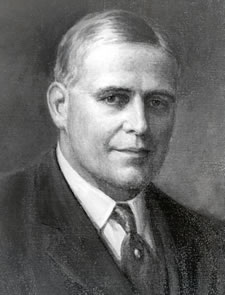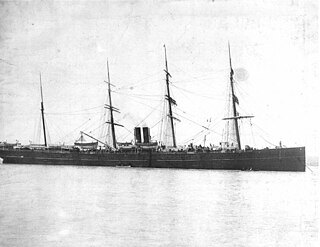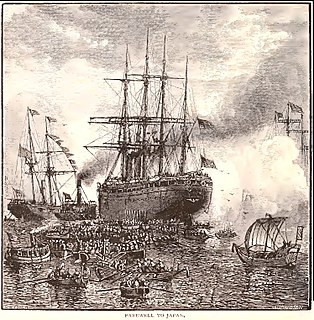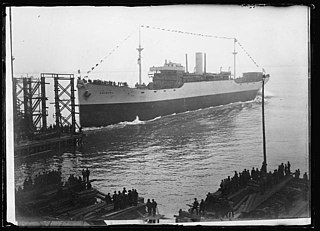
Chester is a city in Delaware County, Pennsylvania, United States within the Philadelphia Metropolitan Area. It is the only city in Delaware County and had a population of 33,972 as of the 2010 census.

William Cameron Sproul was an American politician from Pennsylvania who served as a Republican member of the Pennsylvania State Senate from 1897 to 1919 and as the 27th Governor of Pennsylvania from 1919 to 1923. He also served as chair of the National Governors Association from 1919 to 1922.

Harlan & Hollingsworth was a Wilmington, Delaware, firm that constructed ships and railroad cars during the 19th century and into the 20th century.

Neafie, Levy & Co., commonly known as Neafie & Levy, was a Philadelphia, Pennsylvania shipbuilding and engineering firm that existed from the middle of the 19th to the beginning of the 20th century. Described as America's "first specialist marine engineers", Neafie & Levy was probably the first company in the United States to combine the building of iron ships with the manufacture of steam engines to power them. The company was also the largest supplier of screw propellers to other North American shipbuilding firms in its early years, and at its peak in the early 1870s was Philadelphia's busiest and most heavily capitalized shipbuilder.

The Morgan Iron Works was a 19th-century manufacturing plant for marine steam engines located in New York City, United States. Founded as T. F. Secor & Co. in 1838, the plant was later taken over and renamed by one of its original investors, Charles Morgan.

John Roach was an American industrialist who rose from humble origins as an Irish immigrant laborer to found the largest and most productive shipbuilding empire in the postbellum United States, John Roach & Sons.

SS City of Peking was an iron-hulled steamship built in 1874 by Delaware River Iron Ship Building and Engine Works, Chester, Pennsylvania for the Pacific Mail Steamship Company. City of Peking and her sister ship City of Tokio were at the time of construction the largest vessels ever built in the United States, and the second largest in the world behind the British leviathan Great Eastern.

SS City of Tokio was an iron steamship built in 1874 by Delaware River Iron Ship Building and Engine Works for the Pacific Mail Steamship Company. City of Tokio and her sister ship City of Peking were at the time of construction the largest vessels ever built in the United States, and the second largest in the world behind the British leviathan Great Eastern.
City of Waco was an American steamship which sank with much loss of life on November 9, 1875, in the Gulf of Mexico off Galveston, Texas.

The Etna Iron Works was a 19th-century ironworks and manufacturing plant for marine steam engines located in New York City. The Etna Works was a failing small business when purchased by ironmolder John Roach and three partners in 1852. Roach soon gained full ownership of the business and quickly transformed it into a successful general-purpose ironworks.
Reaney, Son & Archbold was a 19th-century American iron shipbuilding company located on the Delaware River at Chester, Pennsylvania. The company was established in 1859 by Thomas Reaney but it was undercapitalized from the outset, and like many other American shipbuilding companies, fell victim to the shipbuilding slump that followed the American Civil War.

The Merchant Shipbuilding Corporation was an American corporation established in 1917 by railroad heir W. Averell Harriman to build merchant ships for the Allied war effort in World War I. The MSC operated two shipyards: the former shipyard of John Roach & Sons at Chester, Pennsylvania, and a second, newly established emergency yard at Bristol, Pennsylvania, operated by the MSC on behalf of the U.S. Shipping Board's Emergency Fleet Corporation (EFC).
The Delaware River Iron Ship Building and Engine Works, was a major late-19th-century American shipyard located on the Delaware River in Chester, Pennsylvania. It was founded by the industrialist John Roach and is often referred to by its parent company name of John Roach & Sons, or just known as the Roach shipyard. For the first fifteen years of its existence, the shipyard was by far the largest and most productive in the United States, building more tonnage of ships than its next two major competitors combined, in addition to being the U.S. Navy's largest contractor. The yard specialized in the production of large passenger freighters, but built every kind of vessel from warships to cargo ships, oil tankers, ferries, barges, tugs and yachts.
The Chester Pipe and Tube Company was a company incorporated in 1877 in Chester, Pennsylvania by shipbuilder John Roach for the manufacture of iron pipes and boiler tubes for the steamships built at his Chester shipyard, the Delaware River Iron Ship Building and Engine Works.
The Chester Rolling Mill was a large iron rolling mill established by shipbuilder John Roach in Chester, Pennsylvania, United States in 1873. The main purpose of the Mill was to provide metal hull plates, beams and other parts for the ships built at Roach's Delaware River Iron Ship Building and Engine Works, also located at Chester.
The Combination Steel and Iron Company was a steel mill founded in Chester, Pennsylvania by shipbuilder John Roach in 1880. Unlike Roach's other companies, Combination Iron and Steel was initially established not to support the operations of his Chester shipyard, but to produce steel rails and other products for third parties. Roach lost control of the company after his shipbuilding business entered receivership in 1885.
The Standard Steel Casting Company, commonly referred to as Thurlow Works, was a steel production and steel casting facility founded in Chester, Pennsylvania in 1883 by shipbuilder John Roach. The company was established primarily to supply steel ingots for Roach's steel mills, which included the Chester Rolling Mill and the Combination Steel and Iron Company, although it also manufactured steel castings. Standard Steel was the first company in the United States to manufacture commercial quantities of steel utilizing the acid open hearth process.

SS Columbia (1880–1907) was a cargo and passenger steamship that was owned by the Oregon Railway and Navigation Company and later the San Francisco and Portland Steamship Company. Columbia was constructed in 1880 by the John Roach & Sons shipyard in Chester, Pennsylvania for the Oregon Railway and Navigation Company.
Lawrence & Foulks was a 19th-century American shipbuilding company based in New York. Established in the early 1850s, the company built 144 vessels of all types over the course of some fifty years, but is best known for its production of high-speed wooden-hulled steamboats and steamships. Notable vessels built by the company include the record-breaking Hudson River steamboat Chauncey Vibbard, the luxury Long Island Sound steamer Commonwealth, and the fast oceangoing steamships—later U.S. Navy gunboats—Bienville and De Soto. In addition to the domestic market, the company also built ships for service as far afield as South America and China.

SS Oregon (1878–1906) was a coastal passenger/cargo ship constructed in Chester, Pennsylvania by the Delaware River Iron Ship Building and Engine Works in February 1878. Originally delivered to the Oregon Steamship Company, she was used on the Portland, Oregon-to-San Francisco, California route for many years. In 1879, the Oregon Railroad and Navigation Company became the Oregon′s new owners after purchasing the Oregon Steamship Company. Also included in this purchase were the steamships George W. Elder and City of Chester. While in O.R. & N service, Oregon served alongside SS Columbia, which made the first commercial use of Thomas Edison's incandescent light bulb. Like Oregon, Columbia was also built by John Roach & Sons in Chester, Pennsylvania. Over time, Oregon's hull became breached after a number of incidents. Furthermore, the hull had been weighted with concrete to the point where she was considered unsuitable for service as a passenger liner. After operating as a cargo ship, she was laid up in 1894 at Portland. In 1899, the Oregon was re-qualified to carry passengers once more. She was sold by O.R. & N the same year. Despite this, she was viewed as a cursed ship by her crew. On 26 December, 1899 she sank Clan McKenzie in a collision in snow in the Columbia River at Coffee Rock 47 miles above Astoria, Oregon. Two of Clan McKenzie's crew killed, one injured. Her bow was damaged and she drifted ashore, later pulled off.












